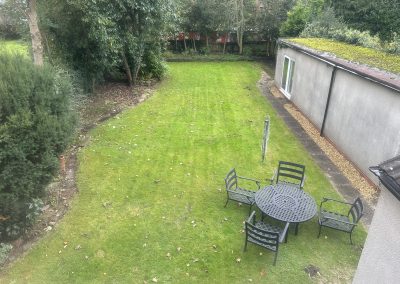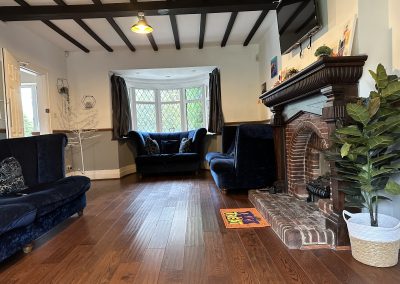Park Road CCT
Park Road is Cove Care Transition’s inaugural CQC registered care home for young adults with complex emotional and mental health difficulties. Cove set up the CCT arm to the company to provide a ‘bridge’ across the ‘cliff-edge drop off’ from children’s to adult services, responsible for many relapses and much distress for people with mental health difficulties.
Park Road itself is well situated in the quiet location of West Park, about a mile outside Wolverhampton City Centre. The house is pleasantly positioned overlooking the large, picturesque park. The park is surrounded by a quiet ring road, well-stocked with speed bumps, the road known both as ‘Park Road West’ on the West and becomes known as ‘Park Road East on the other side of the park.
The home is a large, detached property, built in the early 1900s built in a traditional construction. It is approached from Wolverhampton City Centre, through an area known as ‘Chapel Ash’ from Tettenhall Road (A41) for around 200 meters, then right turn onto Connaught Road, and situated immediately on the left as merges onto Park Road West. Access for cars opens between a pair of timber gates into a concrete surfaced yard at the front of the property, where there is comfortable space for 5 cars.
There are several good-sized reception areas downstairs, and a comfortable staff office. There are 3 registered beds, with ample sized rooms for residents.
Gardens to the rear of the property are simple and well-maintained, consisting mainly of lawn, and there is a useful shedded and garage area at the rear which will convert to excellent spaces for use by the young people and staff.
The overall ecology of this local area can be seen as compatible with the positioning of a residential home in many ways. It is in a quiet residential area, but has the vibrancy of Wolverhampton within easy reach. The ‘smalltown’ infrastructures of Chapel Ash, Whitmore Reans and slightly further afield, Compton and Tettenhall, allows young people many opportunities to engage in community life with the support of staff, and this has often proven safely scaled-down for some young people from larger city locations, requiring less environmental hazards due to their needs; or of a manageable size for those young people who may have been isolated from communities for sustained periods of time, i.e. after a hospital admission.
















